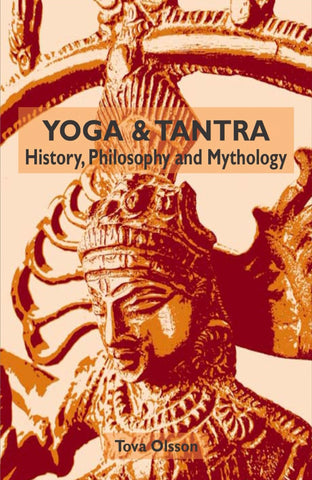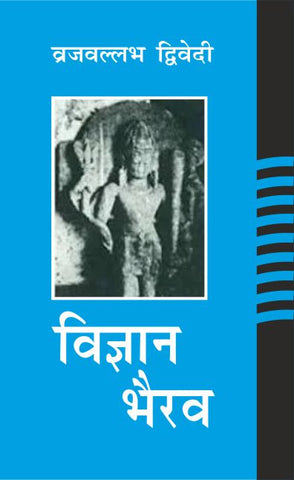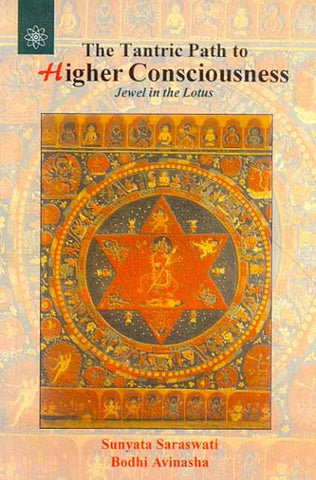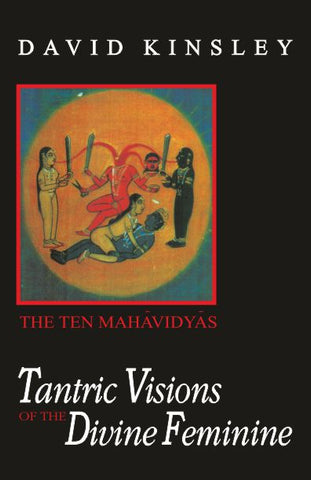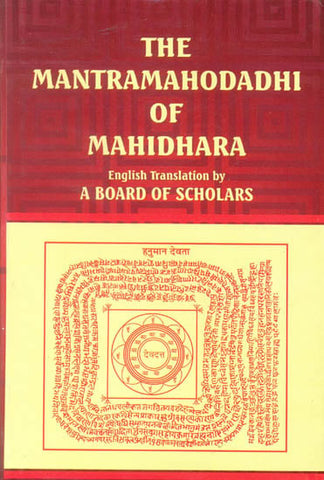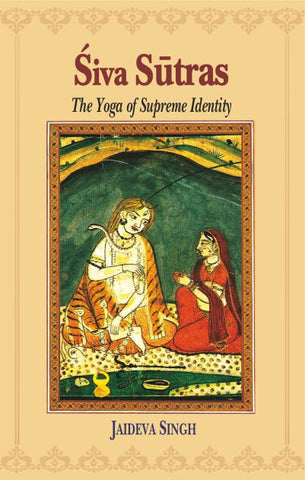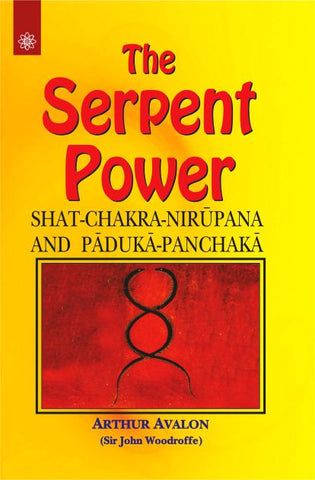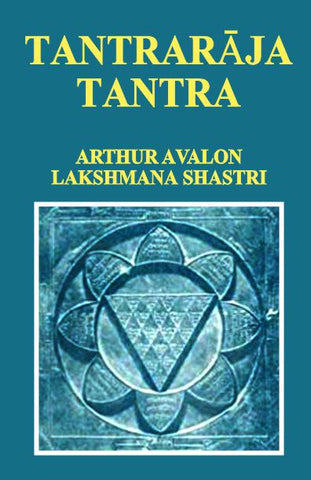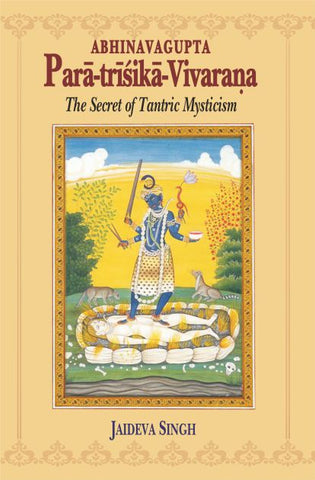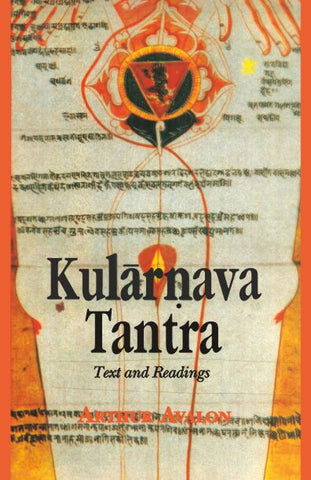Your cart is empty now.
Tantric Yoga and the Wisdom Goddesses is an excellent book introducing the essence of Hindu Tantrism. the book discusses all the major concepts and offers valuable corrections for many existing misconceptions. It also introduces the reader to the core Tantric practices of meditation and mantra recitation, focusing on the Ten Wisdom Goddesses (dasa-mahavidya).
This book presents the meditational and mantric side of Tantra, which is the more common side of Tantra practised in India. It is written from the standpoint of a practitioner and also from one trained in Ayurveda (yogic medicine). It tries to present the living spirit and practice of Tantra, rather than just another academic view. The book is divided into three primary sections; with the fourth as an Appendix.
I have gained great personal insight from his work and have great respect and admiration for his knowledge, and for the lucid way in which he has expounded the ancient wisdom of the Vedas” - Deepak Chopra, M.D.
It is an enormous relief to discover a book in English that authentically represents the Tantric tradition. Dr Frawley's new book provides invaluable insights into the most ancient continuously practised Goddess tradition in the world."-Linda Johnsen, author of Daughters of the Goddess: The Women Saints of India
"His presentation is the first time that English readers have an opportunity to learn about the Ten Mahavidyas, the central doctrine and practice of Shakta Tantricism in great detail. The uniqueness of the book lies in how the author pulls together Tantric and Ayurvedic sciences in a manner which one can practice in one's daily life."-Pandit Rajmani Tigunait, Himalayan Institute
"Tantric Yoga and the Wisdom Goddesses is an excellent introduction to the essence of Hindu Tantrism. The author discusses all the major concepts and offers valuable corrections for many existing misconceptions. He also introduces the reader to the core Tantric practices of meditation and mantra recitation, focusing on the Ten Wisdom Goddesses."-Georg Feuerstein, PhD.
"Mind and body have both to be disciplined to facilitate one's ultimate realisation of Truth. Tantrism is usually projected as a complicated ritualistic path toward this end. A general ritualistic pat towards this end. A general ritualistic path towards this end. A general impression has also been created that sexual practices, sometimes bordering on the perverse, are an integral part of the Tantric path. The author has debunked this misconception by brilliantly expounding the deeper aspects of Tantric practices. He has clearly brought out how Tantrism implies a comprehensive approach towards self-realisation by the integrated practice of mantra, ritual, pranayama and meditation."-Dr. G.V. Narsimhan, The Mountain Path, Vol:35, No.1 & 2 June 1998
David Frawley (Vamadeva Shastri) is one of the few Westerners recognized in India as a Vedacharya or teacher of ancient Vedic wisdom. He is the author of numerous books and articles on Vedic Topics including Ayurveda, Vedic Astrology, Vedanta, Hinduism, Yoga and Tantra, as well as translations and interpretations from the Vedas. Dr Frawley has been given many awards for his work in India including the Veda Vyasa Award by the International Institute of India Studies. He is a Jyotish Kovid through the Indian Council of Astrological Sciences, and is also the President of the American Council of Vedic Astrology, the American offshoot of the Indian council; He has a Doctorês degree in Chinese Medicine and has also been certified as an expert through the University of Poona for his knowledge of Yoga and Ayurveda. He is presently the Director of the American Institute of Vedic Studies.
Tantrism has a long and illustrious history in India, Tibet, Assam, Kashmir, and Nepal. Once widely celebrated, it was acquired during the British Raj notoriety that led to its suppression and almost complete disappearance in India. Today Tantrism is thriving only in the form of Tibetan Buddhism (Vajrayana). One of the principal reasons for the decline of Hindu Tantrism was the inclusion of sexual practices in its rich repertoire, which offended the sensibilities of Hindu Puritans. Although these practices were pursued by only a small Tantric minority, in the minds of the influential Hindu Brahmins Tantrism and sexuality became almost synonymous.
A similar confusion exists nowadays in the West where Tantrism has been experiencing a moderate renaissance ever since the psychedelic revolution of the 1960s. Here, however, it is precisely the sexual orientation of Tantrism that attracts Western seekers who have tired of the sex-negative attitude prevailing in the Judeo-Christian tradition. Many Western seekers think of Tantrism solely in terms of its sexual practices, and not a few who actually immerse themselves in Tantric teachings do so merely for hedonistic reasons. Tantrism, however, is not about selfish pleasure but about ego-transcending bliss, and it is not about sex as such but about the transmutation of sexual energy.
Today we find ads for Tantra Yoga in a variety of publications, and those who happen to have their names on a New Age mailing list can expect to receive junk mail inviting them to Tantric celebrations in idyllic settings, promising pleasure and fun. This comeback, questionable though it is in some respects, represents a significant change from the 1920s when the first English translations of Tantric scriptures (called Tantras) were published and largely ignored.
However, the recent increase in popularity has not gone hand in hand with a comparable deepening of understanding. This is most regrettable because Tantrism is a fascinating spiritual tradition that contains a wealth of insights useful to those who seek to explore the depths of human consciousness. Under appropriate guidance, it can even be a potent tool of self-transformation and spiritual realization.
The problem is that few Western students of Tantrism go to the trouble of studying the Tantric literature itself (whether in the original Sanskrit language or in reliable translations). They also tend to overlook the fact that Tantrism is an initiatory 'tradition, that is to say, it is based on the time-honoured guru-disciple relationship. No scripture can convey the living experience that is central to a spiritual tradition. It is the teacher's instructions that infuse the scriptures with lifeblood. Moreover, it is the guru who in countless practical ways assists the disciple's spiritual awakening and subsequent growth.
Tantrism is a powerful spiritual path, and like anything that is powerful, it has its dangers. Without real guidance and a strong sense of responsibility, the Tantric practitioner is apt to succumb to ego inflation and the misuse of the abilities awakened in him or her.
It is also true that few Westerners are prepared for a traditional pupilage. According to an old adage, the teacher comes when the pupil is ready. Clearly, then, anyone interested in practising Tantrism must first study the Tantric teachings to obtain the necessary intellectual and moral foundation for real Tantric discipline. The present work by David Frawley (Vamadeva Shastri) is ideally suited to provide such a basis for further study and practice. Tantric Yoga and the Wisdom Goddesses is an excellent introduction to the essence of Hindu Tantrism. The author discusses all the major concepts and offers valuable corrections for many existing misconceptions.
He also introduces the reader to the core Tantric practices of meditation and mantra recitation, focusing on the Ten Wisdom Goddesses (dasha-mahavidva). These Goddesses are personifications of the feminine aspect of the Divine. The Tantric practitioner approaches them and seeks to obtain their grace through ritual worship and meditation. The Goddesses' respective spiritual energies then convey the practitioner (sadhaka) safely and swiftly to Self-realization. The teaching of the Ten Wisdom Goddesses is little known but is characteristically Tantric, and it affords Western students reliable access to the metaphysics and spiritual discipline of Tantrism.
David Frawley is well known as a champion of Ayurveda (India's native medical tradition), Jyotisha (Indian astrology), and the Vedas (the earliest scriptures of Hinduism). In particular, his interpretations of the Vedas and his revisioning of early Indian history represent important contributions to a reappraisal of the spiritual wisdom originating with the seers and sages of India.
In the present book, David Frawley does for Tantrism what he has already done for the ancient Vedic tradition. He is a popularizer in the best sense of the word: He seeks to address as many readers as possible, endeavouring to communicate to them deep truths faithfully but without the overload of detail found in academic publications. While I do not always agree with him, I respect and appreciate his learning, understanding, and inspiration, as well as his passionate commitment to making India's wisdom accessible to Western seekers.
Anyone who has met David Frawley knows him to be a walking encyclopedia when it comes to Hindu metaphysics and spirituality. Knowledge bubbles forth from him like a clear, refreshing spring from which pilgrims can safely quench their thirst for higher wisdom. I can heartily recommend this work.
Tantra has become one of the more well-known and popular aspects of Eastern spirituality in the world today. A whole modem neo-Tantra appears to be arising, with various forms in the Western world as well as in India. Tantra appears to have the freedom and universality that the modern mind is seeking, which is creative, diverse and stimulating and therefore wide in terms of its potential audience. Yet Tantra remains one of the least understood of the yogic teachings.
The spiritual and meditational side of Tantra has not been explained in detail or in-depth, particularly from the standpoint of the Hindu tradition, wherein perhaps the greatest diversity of Tantric teachings exists. Hence it is necessary that we take a new look at this important part of the Yoga tradition. Tantra can perhaps best be defined as an energetic approach to the spiritual path, using various techniques including mantra, ritual, Pranayama, and meditation. It contains a devotional approach emphasizing the worship of the Goddess and her Lord, Shiva. It contains a way of knowledge, directing us to Self-realization and the realization of the Absolute. As such it is a complex yet integral system for the development of consciousness which has something for all those who are seeking the truth. This book presents the meditational and mantric side of Tantra, which is the more common side of Tantra practised in India. It is written from the standpoint of a practitioner and also from one trained in Ayurveda (yogic medicine). As such, it tries to present the living spirit and practice of Tantra, rather than just another academic view. The book is divided into three primary sections, with the fourth as an Appendix. The book attempts to present the background, theory, and practice of Tantric Yoga.
1. Part One examines the background of Tantra relative to modern culture, including Tantra in the West today, the traditional Hindu view of Tantra, and the different levels of Tantric teachings relative to the traditional understanding of Tantra in India. The purpose of this section is to create a foundation for the understanding of Tantra in its full scope.
2. Part Two presents one of the major teachings of Tantra - that of the Dasha Mahavidya or Ten Wisdom Forms of the Goddess. All the levels of the Goddess from her symbolic forms to her higher meditational approaches are systematically explored. This is the core section of the book.
3. Part Three examines Tantric yogic practices specifically relative to Ayurveda, the traditional medicine of India. It gives detailed information about the process of the development of consciousness and the practices which help to facilitate it. This is the practical part of the book for yogic practitioners.
4. The Appendix correlates Hindu and Buddhist Tantric systems in one chapter and includes a Sanskrit key, a Sanskrit glossary, and a bibliography.
Kavyakantha Ganapati Muni
Much of the Tantric knowledge presented here, particularly that relative to the Ten Wisdom Forms of the Goddess, is based upon the work of Kavyakantha Ganapati Muni (1878-1936). Ganapati was perhaps the foremost disciple of Ramana Maharshi, whom many regards as the foremost guru and sage of modern India. In fact, it was Ganapati who gave Ramana Maharshi his name, as previously the boy sage was called Brahmana Swami. Ganapati and Ramana were regarded as modern incarnations of Ganesh and Skanda, the two children of Shiva and Parvati. I was blessed to receive nearly the whole mass of Ganapati's existent works through one of his few living disciples, K. Natesan, now in his eighties, who is their sole living repository. Nearly all these works are in Sanskrit, mainly in out-of-date editions or as copied by hand by Natesan from Ganapati's own hand-written manuscripts.
Ganapati Muni was a great Tantric and wrote from his own experience. He was one of the greatest of all Sanskrit poets and understood the entire tradition, back to the oldest Vedas. He presented all the correlations of Tantra from outer ritual to the highest spiritual knowledge, and from its ancient Vedic roots. In his own life, Ganapati had a unique yogic experience that indicates the extent of his realization. After years of intense yogic practice he experienced the opening up of his skull, the loosening of the suture at the top of the head. After that, light and energy radiated from the top of his head. He lived in the state transcending the ordinary mind-body complex, not just as an idea, but as a physical fact.
Ramana Maharshi
Ramana Maharshi (1879-1950) himself is well known as a jnani or silent sage and is not usually thought of as a Tantric teacher. However, he did install a Shri Chakra, the most important Tantric symbol, at his mother's Samadhi, which became the centre around which his ashram has grown up. Both he and Ganapati Muni empowered the Chakra and observed the regular worship of it. When in the presence of Maharshi, Ganapati Muni was composing the concluding verses to Uma Sahasram, his great Tantric work on the Goddess, Maharshi opened his eyes and said, "Have you finished all that I have dictated?" In this regard, we may consider that the Maharshi also had a place in the Tantric knowledge presented by Ganapati Muni. Contact and study with other great Hindu gurus like Anandamaya Ma and Ramakrishna, the former the Goddess incarnate and the latter the great devotee of Kali, were also important inspirations in the search that has produced this book.
Delivery and Shipping Policy
- INTERNATIONAL SHIPPING
- Rs.1000-1100/kg
- ESTD. Delivery Time: 2-3 weeks (depending on location)
- Bubble Wrapped with Extra Padding
- NATIONAL SHIPPING
- NCR: Rs. 30/half kg
- Standard: Rs. 80/half kg
- Express shipments also available on Request
- ESTD. Delivery Time: Ranging from 1-4 days up to 7 business days (Depending on your choice of Delivery)
- TRACKING
- All orders; national or international, will be provided with a Tracking ID to check the status of their respective orders
- Depending on the Shipping Service, Tracking ID may be used on their respective tracking portals
Frequently Asked Questions (FAQs)
Domestic Shipping: 3-4 Days (after shipping)
International Shipping: 1-2 weeks (based on your location)
You will receive an email once your order has been shipped or you can email us if you didn't receive tracking details (info@mlbd.co.in)
Every book that we sell is the latest edition except all the rare books
Yes, we do provide free shipping, only on domestic orders (within India) above Rs.1500












